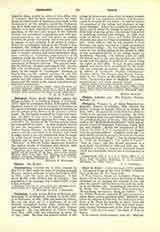

Chaignon, PIERRE, b. at Saint-Pierre-la-Cour, Mayenne, France, October 8, 1791, entered the Society of Jesus August 14, 1819; d. at Angers, September 20, 1883. He passed his whole life in the ministry, chiefly in the spiritual direction of priests. In thirty years he gave three hundred retreats to the clergy of the principal dioceses of France. His chief literary work is his “Meditations sacerdotales” which has appeared in several languages, Bohemian, Polish, Italian, and English. Bishop De Goesbriand of Burlington, Vermont, U.S.A., translated it into English from the eleventh edition. Chaignon wrote also “Le salut facilite aux pecheurs par la devotion au tres saint et immacule Coeur de Marie”; “Les six dimanches de St. Louis de Gonzague”; “Le pretre h. l’autel”; “Paix de l’ame”; and also several brochures on a good death, the jubilees of 1869 and 1875, etc. He established a Union of Prayer for Deceased Priests which was canonically erected into a confraternity in 1861.
T. J. CAMPBELL

